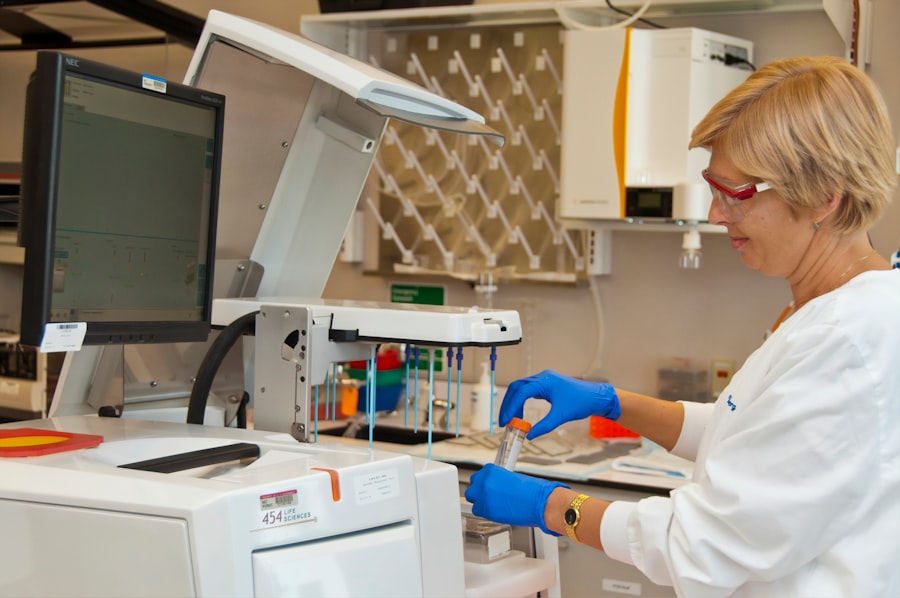Clinical research monitoring is a critical component of the clinical trial process, serving as a bridge between the research sites and the sponsors or regulatory bodies. This function ensures that clinical trials are conducted in accordance with established protocols, regulatory requirements, and ethical standards. The primary goal of clinical research monitoring is to safeguard the rights and well-being of participants while ensuring the integrity of the data collected.
As clinical trials become increasingly complex, the role of the clinical research monitor has evolved, necessitating a deeper understanding of both the scientific and operational aspects of clinical research. The importance of clinical research monitoring cannot be overstated. It encompasses a range of activities, including site selection, initiation, routine monitoring visits, and close-out activities.
Monitors are tasked with verifying that the trial is being conducted according to the protocol and that data is being accurately recorded. They also play a vital role in identifying and mitigating risks that could compromise the study’s outcomes. As the landscape of clinical research continues to change, with an increasing emphasis on patient-centric approaches and adaptive trial designs, the responsibilities and methodologies associated with monitoring must also adapt to meet these new challenges.
Key Takeaways
- Clinical research monitoring ensures the integrity and quality of clinical trials through oversight and evaluation.
- Monitors are responsible for site visits, data verification, and ensuring adherence to protocols and regulations.
- Effective site monitoring involves strategic planning, risk assessment, and regular communication with research teams.
- Technology, such as electronic data capture and remote monitoring tools, enhances efficiency and accuracy in monitoring.
- Future trends in clinical research monitoring include increased use of AI, decentralized trials, and advanced data analytics.
The Responsibilities of a Clinical Research Monitor
The responsibilities of a clinical research monitor are multifaceted and require a blend of scientific knowledge, regulatory understanding, and interpersonal skills. One of the primary duties is to conduct regular site visits to ensure compliance with the study protocol. During these visits, monitors review source documents, verify data entry in case report forms (CRFs), and assess the overall conduct of the trial.
This involves checking that informed consent has been obtained appropriately and that adverse events are documented and reported in accordance with regulatory guidelines. In addition to these compliance checks, monitors are responsible for providing training and support to site staff. This may include educating them on the protocol specifics, data collection methods, and regulatory requirements.
Effective communication is essential in this role; monitors must be able to convey complex information clearly and foster a collaborative environment where site staff feel comfortable discussing challenges or uncertainties. Furthermore, monitors must maintain meticulous records of their findings during site visits, documenting any issues identified and ensuring that corrective actions are taken promptly.
Strategies for Effective Site Monitoring

Effective site monitoring requires a strategic approach that balances thoroughness with efficiency. One key strategy is to develop a comprehensive monitoring plan tailored to each specific trial. This plan should outline the frequency of visits, key performance indicators (KPIs), and specific areas of focus based on the trial’s complexity and risk profile.
By identifying high-risk areas early on, monitors can allocate their time and resources more effectively, ensuring that critical aspects of the trial receive the attention they require. Another important strategy is to foster strong relationships with site staff. Building rapport can lead to more open communication, making it easier for monitors to identify potential issues before they escalate.
Regular check-ins between monitoring visits can help maintain this relationship, allowing for ongoing support and guidance. Additionally, utilizing risk-based monitoring approaches can enhance efficiency; by focusing on sites or data points that present higher risks, monitors can prioritize their efforts where they are most needed, ultimately improving the quality of oversight while reducing unnecessary burdens on site staff.
Utilizing Technology for Streamlined Monitoring
| Technology | Metric | Before Implementation | After Implementation | Improvement |
|---|---|---|---|---|
| IoT Sensors | Data Collection Frequency (per hour) | 4 | 60 | 1400% |
| Cloud-based Dashboards | Data Accessibility (hours delay) | 24 | 0.5 | 95.8% Reduction |
| AI Analytics | Anomaly Detection Accuracy (%) | 70 | 92 | 31.4% Improvement |
| Mobile Monitoring Apps | Response Time (minutes) | 45 | 10 | 77.8% Reduction |
| Automated Alerts | Incident Resolution Time (hours) | 6 | 2 | 66.7% Reduction |
The integration of technology into clinical research monitoring has revolutionized how monitors conduct their work. Electronic data capture (EDC) systems have become standard practice, allowing for real-time data entry and access. This not only streamlines data collection but also facilitates quicker identification of discrepancies or issues that may arise during the trial.
Monitors can access data remotely, enabling them to conduct preliminary reviews before site visits and focus their efforts on areas that require more in-depth examination. Moreover, advanced analytics tools can assist monitors in identifying trends or patterns within the data that may indicate potential problems. For instance, if a particular site consistently reports higher rates of adverse events compared to others, this could signal a need for further investigation or additional training for site staff.
Additionally, mobile applications designed for clinical trial management can enhance communication between monitors and site personnel, allowing for instant updates and feedback. By leveraging these technological advancements, clinical research monitors can enhance their efficiency and effectiveness in overseeing trials.
Communication and Collaboration with Research Sites
Effective communication is at the heart of successful clinical research monitoring. Monitors must establish clear lines of communication with site staff from the outset of a trial. This includes not only providing detailed information about the study protocol but also ensuring that site personnel understand their roles and responsibilities within the trial framework.
Regular meetings—whether in person or virtual—can help maintain this dialogue, allowing for ongoing updates and discussions about any challenges that may arise. Collaboration extends beyond mere communication; it involves creating a partnership between monitors and site staff. When monitors approach their role as supportive allies rather than authoritative overseers, it fosters an environment where site personnel feel empowered to voice concerns or seek clarification.
This collaborative spirit can lead to improved problem-solving and innovation in addressing challenges that may arise during the trial. For example, if a site encounters difficulties with patient recruitment, a monitor can work alongside them to brainstorm strategies or share best practices from other sites.
Ensuring Compliance with Regulatory Standards

Compliance with regulatory standards is paramount in clinical research monitoring. Monitors must possess a thorough understanding of Good Clinical Practice (GCP) guidelines, as well as local regulations governing clinical trials. This knowledge enables them to assess whether sites are adhering to these standards during their monitoring visits.
For instance, monitors must verify that informed consent processes are being followed correctly and that all necessary documentation is in place. In addition to ensuring compliance during routine monitoring activities, monitors play a crucial role in preparing sites for regulatory inspections or audits. This involves conducting mock inspections to identify any potential deficiencies before an official review occurs.
By proactively addressing compliance issues, monitors can help mitigate risks associated with regulatory non-compliance, which could lead to delays in trial timelines or even jeopardize the integrity of the study results.
Managing Data and Documentation
Data management is a cornerstone of clinical research monitoring. Monitors are responsible for ensuring that all data collected during a trial is accurate, complete, and verifiable. This involves not only reviewing data entries but also cross-referencing them with source documents to confirm their validity.
Any discrepancies must be addressed promptly to maintain data integrity. Documentation is equally important; monitors must maintain detailed records of their activities during site visits, including findings, communications with site staff, and any corrective actions taken. This documentation serves as a critical resource for both sponsors and regulatory bodies, providing evidence of compliance with protocols and regulations.
Furthermore, effective data management practices can facilitate smoother transitions between different phases of a trial, such as from recruitment to data analysis.
The Future of Clinical Research Monitoring: Trends and Innovations
As clinical research continues to evolve, so too does the field of clinical research monitoring. One notable trend is the increasing adoption of decentralized clinical trials (DCTs), which leverage technology to conduct trials remotely or at patients’ homes rather than traditional sites. This shift presents new challenges for monitors who must adapt their strategies to ensure compliance and data integrity in this novel environment.
Innovations such as artificial intelligence (AI) and machine learning are also beginning to play a significant role in monitoring practices. These technologies can analyze vast amounts of data quickly, identifying anomalies or trends that may require further investigation. Additionally, AI-driven tools can assist in predicting potential risks based on historical data from previous trials, allowing monitors to proactively address issues before they impact study outcomes.
The future landscape of clinical research monitoring will likely be characterized by greater flexibility and adaptability as new methodologies emerge. Monitors will need to embrace these changes while maintaining their core responsibilities of ensuring participant safety and data integrity. As technology continues to advance, those in the field will find themselves equipped with new tools that enhance their ability to oversee complex trials effectively while fostering collaboration among all stakeholders involved in the research process.




